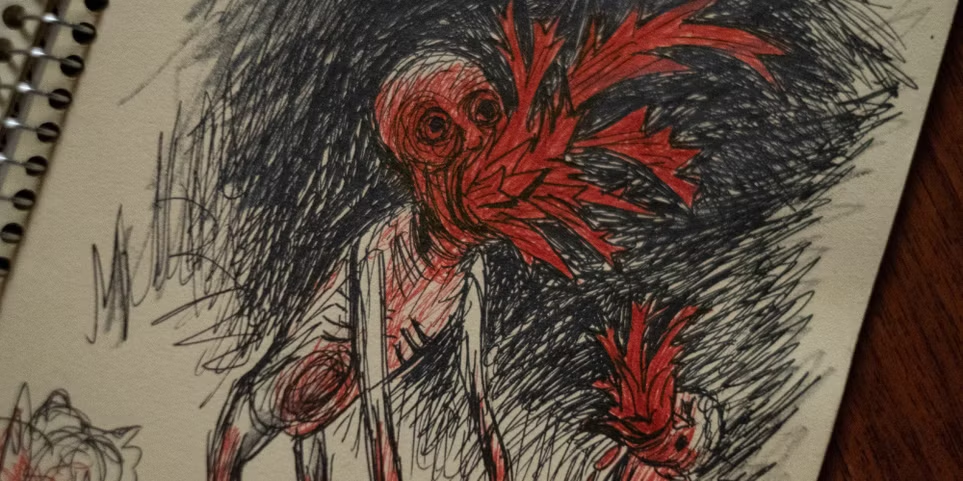
Team Family
Susan and Valerie sympathize with the plight of poor little Lucas Weaver and Felicity, who maybe should have stayed in NYC, while exploring Antlers — a horror movie about grief, abuse, loyalty, and knowing when to let go.
We talk Wendigos, creepy child actors, trauma metaphors, and the deep emotional hooks that got us.
Also: tacos, The Last Unicorn, and whether coal comes from dinosaurs. (It doesn’t.)
Show Notes:
- The IFC is a great movie theater, Disobedience is a bad movie

- “Felicity” was indeed the name of the television series Kerri Russel starred in and it did take place in New York City.

- “Where do they mine for coal in the US?”
Coal is mined in many parts of the U.S., but the major coal-producing regions are:- 1. Appalachian Region: West Virginia, Kentucky, Pennsylvania, Virginia, Ohio, Tennessee
- Notes: West Virginia is one of the top coal-producing states, especially for underground mining.
- 2. Interior Region: Illinois, Indiana, western Kentucky, Missouri, Arkansas, Texas, Oklahoma
- Notes: Illinois has some of the largest coal reserves in the country.
- 3. Western Region: Wyoming, Montana, Colorado, Utah, New Mexico, Arizona
- Notes: Wyoming (specifically the Powder River Basin) produces more coal than any other state.
- 4. Gulf Coast Region: Texas, Louisiana, Mississippi
- 1. Appalachian Region: West Virginia, Kentucky, Pennsylvania, Virginia, Ohio, Tennessee
- Susan reads list and surprised asks a follow up question, “Wait, not in Oregon?”
- Nope, Oregon doesn’t have any active coal mines.
- In fact, Oregon has no significant coal production at all. The state’s energy landscape has shifted heavily toward hydropower, wind, and natural gas over the past few decades.
- Susan thinks, “At least I was right about Kentucky” and is sorry that “Antlers” has misled us all.
- Dinosaurs ≠ coal or diamonds
- Lucas Weavers is a haunted kid that is amazing at art:





- I love that the trope of creepy kid drawings is called NightmareFuelColoringBook
- ❥ Susan boyfriend in Antlers







- Here’s another great trope featured in Antlers: BadBlackBarf
- Outro/ Stinger =s The End… Or is it?
- SheCreature ending =s Someone to Remember Him By but with a subversive gender swap.

- Okay so I made the Letterboxd list above, “Nature Takes its Revenge” but now I’m kind of conflicted: Nature is definitely the antagonist in “The Last Winter” and “The Happening” but like “The Birds”? That’s birds taking revenge, not nature personified, right? But with that logic… Nature sends a Wendigo? Wendigo’s… are mythical? Birds, Ants Piranhas… are… natural? My lines are blurring here. Help if you can
- Susan ask AI, “How many of us are there on this planet?
As of April 2025, the global population is estimated to be about: 8.1 billion people - Susan asks AI, “At a rate of about five extra folks a week (Frank’s meth cooking buddy, Frank, Aiden, red headed sock monkey friend, Cop friend) how long would it take nature to kill of humanity?
– Current population: 8.1 billion people
– Nature’s “kill rate”: 5 people per week
-How long to wipe out humanity?
8,100,000,000 people ÷ 5 people/week = 1,620,000,000 weeks ≈ 31,153,846 years
The AI is not doing the predictive math for birth rate and death rate in it’s estimate. I don’t think 5 extra folks a week could even keep up. - I also forgot the principle dies:

so… bad math all around. Helpful if the Wendigo’s souls didn’t pass along one at a time but rather were fruitful and multiplied, like humans do, exponentially…
• Susan asks AI to work out how many people per week nature would have to take out to wipe out all 8.1 billion of us in more practical timeframes.
– Wipeout humanity in 1 year (52 weeks) 8,100,000,000 ÷ 52 ≈ 155,769,231 people/week
That’s basically the entire population of Bangladesh or Russia every single week. ←I’ve never been to those places but Russia is big….
– Wipeout humanity in 100 years (5,200 weeks) 8,100,000,000 ÷ 5,200 ≈ 1,557,692 people/week
That’s like losing the population of Philadelphia or Munich every week for a century. ←I’ve never been to these places either but this starts to be understandable.
The moral of all this slide-y math is Wendigos and nature are going to have gotta step it up.